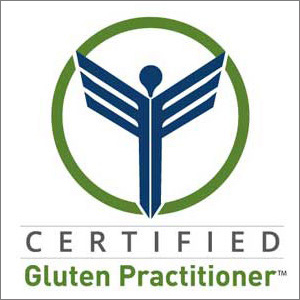 Whether or not you are new to the gluten-free lifestyle, it’s easy to fall prey to less than wise food choices.
Whether or not you are new to the gluten-free lifestyle, it’s easy to fall prey to less than wise food choices.
Perhaps even more surprising, you can follow a gluten-free diet religiously and still be eating poorly.
How is that possible?
Well, just because your diet is gluten-free – or vegan, vegetarian or something else entirely – it doesn’t mean your diet is healthy.
After all, temptation is everywhere.
And regardless of which diet you follow, processed, sugary foods are often pervasive.
However, fear not. Below are some easy tips that could easily get you back on the right track.
Embrace Whole Foods
There is joy to be found in eating low on the food chain.
That means embracing the foods that come directly from the earth, with little to no processing.
In fact, that is the very definition of a whole food.
The fewer ingredients, the better off you will be. Plus, you can be sure that none of these products contain gluten or any other suspect ingredients.
Indeed, whole foods are about as pure as you can get.
Next time you’re shopping for groceries, here are some questions you can ask before tossing less than healthy choices into your grocery cart.
- Where does the food come from?
- Is it naturally derived from the earth?
- Can you imagine it growing in a field?
The journey of a whole food from earth to market is a direct one. These are the foods that are packed full of nutritional benefits that will jump-start your diet in no time.
And that’s what you want.
Eat the Rainbow
Look for the freshest, most beautiful ingredients you can find, especially when buying produce.
Remind yourself to ‘eat the rainbow’.
If you’re not sure what that means, eating the rainbow refers to the kaleidoscope of colors found in nature. Your choices in produce – in a range of colors from red, green, purple, orange and yellow – are the very foods you need to include to ensure optimal health.
Be sure to grab a copy of the March issue of Whole Living Magazine – for an in-depth look at what this concept really means.
Not only are the pictures gorgeous but there are also some delicious recipes for you to experiment with.
Focus on Quality
Beyond produce, look for hormone-free, grass-fed beef and organic, cage-free poultry. Choose wild fish over farmed.
Focus on quality, organic ingredients wherever possible, whether purchasing fresh, frozen or canned.
Speaking of canned, keep in mind that most cans – whether aluminum or steel – are coated with the chemical BPA (bisphenol A), which has recently been the subject of many health concerns.
I buy Eden brand canned beans and Nature Forest Coconut Milk – two brands that are known to be BPA-free.
Make sure your diet also includes whole grains and legumes, nuts and seeds, and healthy fats.
That’s right – fats can be healthy, too!
It’s simply a matter of choosing the right ones. For cooking, olive oil is perfect for sautéing over low heat but quickly becomes rancid – as in toxic – when used for medium to high heat.
For anything that requires a very hot skillet, try switching to coconut oil, for a healthy alternative. Keep in mind that oils such as high-oleic safflower, canola or corn oil are highly processed and don’t deserve a place in your kitchen.
Whenever you can, always buy the best quality you can afford.
And if you’re going to indulge in a sweet treat, or a piece of chocolate, then be sure to make it a moment to remember!
I talk about this & more in detail in my gluten-free guide: 7 Ways to Design a Gluten-Free Life – available right here on my website, absolutely FREE.
Be Like a Scientist
I recommend that you approach meal preparation and shopping as if you were a scientist.
That means questioning where you food comes from.
Ask how it was grown and where it was manufactured. Don’t worry about being a nuisance. It’s your body and you have a right to know!
Also, be willing to experiment and try something new.
There is a world of healthy, delicious, gluten-free food out there, just waiting for you to explore.
That includes a wonderful selection of grains you might never have heard of – things like quinoa, teff and amaranth – that can not only boost your diet but tantalize your palate.
Seek Variety
In a sense, planning a meal is a little like designing a home.
That’s because some of the same basic principles apply – in terms of using a variety of color, texture – and in the case of food, flavor!
Just as an all-white room needs the occasional pop of color – so too, do the colors on your plate.
If you were served a meal of roast chicken, white rice and steamed cauliflower, would you be impressed?
Or would your initial reaction be one of mild disappointment?
Let’s face it. Such a meal would definitely seem rather bland – both visually and in terms of taste.
So go for that pop of color and flavors that burst in your mouth.
Introduce a splash of color with vibrant greens, or something else equally healthy and good for you.
Experiment with different textures and flavors, and your taste buds will be wowed!
Turn Up the Heat
Speaking of wowing your taste buds, be sure to also include a variety of spices and fresh herbs, whenever possible.
It’s a simple change that can make a world of difference.
While you’re at it, it might be time to update your current stash of bottled spices.
Those wonderful little bottles of herbs and spices tend to collect in drawers and cabinets like leftovers pushed to the back of the fridge.
If there’s anything you haven’t used in more than a year, it’s probably time to replace it. Not because the contents may have spoiled, but rather, due to loss of flavor.
Cooking or baking with tired spices doesn’t do justice to your efforts in the kitchen.
Any way you look at it, a great meal, just like a great room design, needs to be creatively assembled using fresh, wholesome products that nourish you from the inside out.
 Follow
Follow


Speak Your Mind